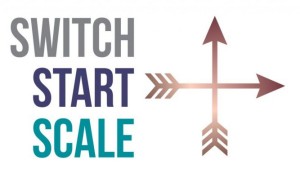Appreciate that everyone has a different opinion about writing for websites, landing pages and social media posts so this blog isn’t about what you should do… rather it is more about whether these suggestions make sense to you and giving it a go.
If you’ve connected via a 1 on 1 coaching session, maybe a pitching or public speaking workshop then this may sound familiar to you.
What happens when you write for your own website is that you want to show your value, the solutions you offer and frame things positively. And this is okay… but it is all about you.
Instead, when you read on, you’ll get to understand a behavioural competency approach to communication that makes your audience move to where you’d like them to go.
If you have an existing website, and/or maybe pull up another, and see how it compares against this formula.
Firstly, begin with an agreement question. You might be asking what is this? Well, an agreement question is one that the audience will only say yes to. It needs to be chunked up enough and frame positively. Here is an example:
Would you like to publish content that is valuable and sparks interest in your audiences? Can you come up with an agreement question that might work for your current and potential clients and customers? If you are open to feedback, then you can email your agreement question to wendy@switchstartscale.com.au.
What comes second is the pains. This relates to the problems and issues or barriers that your current and potential clients and customers are facing. Such as, when you do write for business, things can sound too formal, stuffy and you might either state the obvious or not provide any new ideas.
Then onto gains, which you should find easy as most of you are all about solving problems for people. Like, instead, when you write where it is like a conversation and it flows, with clear formatting and unique ideas, it is a pleasure to read.
Only then do you bring in the solution and most of the time this is the first point covered on a website page or in an email. Do not put this first – why? You need to build up a relationship with your customer, showing that you understand what they are thinking and/or feeling
Testimonials can then come into the picture to add third party validation where you are not spruiking your own value.
Do not use I, me, my, we our, us or your business name lots of times as this puts the focus on you and not your customer. Think about using softening words like maybe, might, could, perhaps, possibly, potentially to help you get agreement not only in the first question but all through the content. And if staring from the top with an agreement question doesn’t work for you, a fact might. If you use a fact, then you need to indicate the reference or source and also check out your competition to see that they aren’t using the same fact. You would not like to be mistaken for another business or person and I have seen this happen in fields like mental health and wellbeing where the same facts are often used as evidence on addressing mental health issues in the workplace.
There are some rules and broader guidelines about how to write blogs and content that gets read. You can find out more with hints and tips in this latest blog post.
If would like to try out some of these tips, have a go and then get in touch with your drafts or examples via email and/or book in a 1 on 1 time so we can work on it together.

